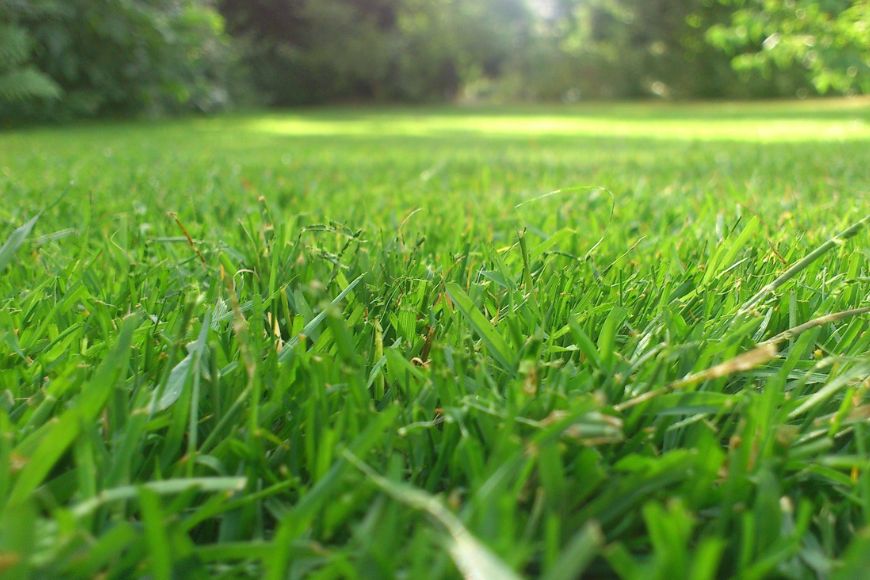
How to Successfully Plant Grass Plugs
Have you noticed a few bare patches in your yard? Don’t despair if you have! Your lawn can easily be repaired, and soon it will be looking as good as new. What’s the simple solution? Grass plugs. By planting grass plugs in those bare or unsightly areas, you can easily and inexpensively have a great-looking yard again.
What Is a Grass Plug?
A grass plug is a small piece of turf that was grown specifically to help fill holes in your yard. They are usually 2-3 inches in diameter, and once they are established, they will grow out until the hole is filled in.
What Should You Do Before Planting Grass Plugs?
Like most things in life, the majority of the work when it comes to grass plugs comes in the form of preparation. In fact, there is more preparation for plugging your lawn than most people think. Additionally, if you don’t prepare properly, you more than likely won’t be happy with the results.
- It is best to plant during the spring and try to avoid the heat of summer. In the midst of summer, you will have to water your plugs more than you would when the weather is cooler. You can still plug your lawn in the hot months of summer, just remember you have to water more often.
- Test your soil and make sure that there is plenty of organic matter to provide nutrients and help drain the soil. You will also want to test that the pH is within recommended limits. If your soil isn’t ready for the plugs, and you move forward anyway, you might end up doing the whole job again next year. So, don’t skip this step.
- Do a little research and see what varieties of grass do well in your area. Find the type that will grow best in your region. The better suited it is, the better your yard will look when you finish.
- Measure the area that you will be filling. You need to know how many square feet you will be patching, so you will be able to buy the right amount of plugs.
- You will need one plug for every square foot you intend to plant.
- Two weeks before you want to plant, apply a herbicide according to the direction. You may also want to apply a preemergent to kill existing plants and seeds.
- Remove the dead grass and weeds from the area using a rototiller, shovel or hoe, then pull them out and add them to the compost bin.
Planting the Grass Plugs
After properly prepping your yard, you will find that the process of planting your grass plugs isn’t all that complicated.
- Once you have purchased the plugs, plant them as soon as possible. The sooner they are in the ground, the better they will root.
- Using a shovel or hoe, turn the soil where you will be planting each plug so it is loose down to 6 inches.
- To make it easier, you can mark where you are putting the plugs with turf paint that is used to line athletic fields.
- Moisten the soil the night before you put in the plugs, then again right before you put them in–the soil should be damp, not wet.
- Moisten the roots of each plug, too. This helps them to root in the new soil.
- Now dig a hole the same depth as the plug and just a little wider. You can use a shovel, hoe or an auger attached to your electric drill to make it easier.
- Sprinkle a little fertilizer (the recommended amount from the package instructions) into the hole to help kickstart your plugs.
- Put the plug in that ground and firmly pack the soil around it. It should be level with the ground around it–not higher or lower.
- Water the area again. Remember, it should be wet, not waterlogged, so stop when you see pools beginning to appear on the surface of the ground.
What You Will Need to Do After Planting
Once the plugs are in, you will want to follow up with a bit of care to ensure the plugs take and thrive over time. Remember all good things come with time, and the last thing you want to do is let that hard prep work and planting go to waste. So, beginning the day after you plant:
- Water the area daily. If it is hot and dry, you might want to water them once or twice a day. Do this for the first 3 weeks, then every other day after that.
- There will still be weeds, so pull them as they appear. You don’t want them competing with your new grass.
- Fertilize the area once a month so the new grass has all the nutrients it needs.
- You can start mowing after the first 4-6 weeks as needed.
- You might need to top dress the area if it is a little bumpy.
Wait Patiently…
It might take a while, but the plugs will grow and spread until the area is filled in. With any luck, you have fixed whatever problem caused the poor growth, and your yard will look immaculate. A little time and money will go a long way in making your yard the envy of the neighborhood!
